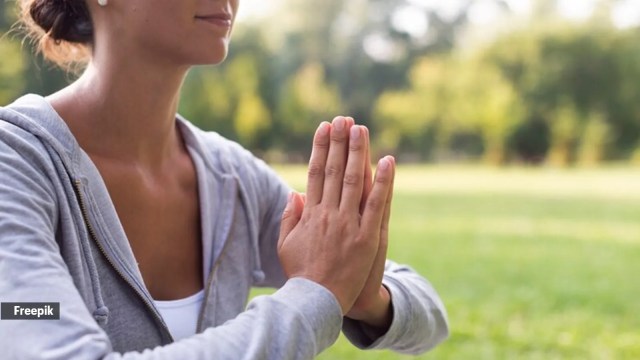Researchers find breathing patterns unique as ‘fingerprint’, identify individuals with high accuracy
Breathing exercises, such as deep breathing, aimed at combating stress and calming the nervous system focus on manipulating one's breath patterns
 Here's what you must consider (Photo: Freepik)
Here's what you must consider (Photo: Freepik)The way one breathes could possibly serve as their “nasal fingerprints”, researchers said after their study could identify individuals based solely on their breathing patterns with a nearly 97 per cent accuracy.
“You would think that breathing has been measured and analysed in every way. Yet we stumbled upon a completely new way to look at respiration. We consider this as a brain readout,” said author Noam Sobel of Israel’s Weizmann Institute of Science.
The findings of the study, published in the journal Current Biology, also showed that one’s “respiratory fingerprints” correlated with their body mass index, sleep-wake cycle, levels of depression and anxiety, and even behavioral traits.
Therefore, breathing patterns could offer a window into their physical and mental health, the authors said.
They explained that study idea birthed from the knowledge that the brain processes an odour while inhaling — which made the team wonder ‘since every brain is unique, wouldn’t each person’s breathing pattern reflect that?’.
For the study, nearly 100 healthy young adults were fitted with a lightweight wearable device — that the researchers developed — and asked them to go about their daily lives.
Using soft tubes placed under the participants’ nostrils, the device tracked nasal airflow continuously for 24 hours.
“We found that we could identify members of a 97-participant cohort at a remarkable 96.8 per cent accuracy from nasal airflow patterns alone,” the authors wrote.
“In other words, humans have individual nasal airflow fingerprints,” they wrote.
The high levels of accuracy remained consistent across tests conducted over a two-year period — a performance that was comparable to voice recognition technologies, the researchers said.
“I thought it would be really hard to identify someone because everyone is doing different things, like running, studying, or resting. But it turns out their breathing patterns were remarkably distinct,” said author Timna Soroka of the Weizmann Institute of Science.
 Turns out breathing patterns were remarkably distinct just like fingerprints (Photo: Freepik)
Turns out breathing patterns were remarkably distinct just like fingerprints (Photo: Freepik)
Further, these respiratory fingerprints were related with a person’s “physiological states, such as levels of arousal and body-mass index, and cognitive traits, such as levels of anxiety, levels of depression and behavioural tendencies”.
For example, the participants scoring high on anxiety measurements were found to have shorter inhales and varied more in the pauses between breaths while sleeping.
While none of the participants met the clinical criteria for diagnosis of mental of behavioural conditions, the study results suggest that a long-term monitoring of nasal airflows could offer insights into physical and emotional well-being, Soroka said.
“We intuitively assume that how depressed or anxious you are changes the way you breathe. But it might be the other way around. Perhaps the way you breathe makes you anxious or depressed. If that’s true, we might be able to change the way you breathe to change those conditions,” Sobel said.
Breathing exercises, such as deep breathing, aimed at combating stress and calming the nervous system focus on manipulating one’s breath patterns.



- 01
- 02
- 03
- 04
- 05
























